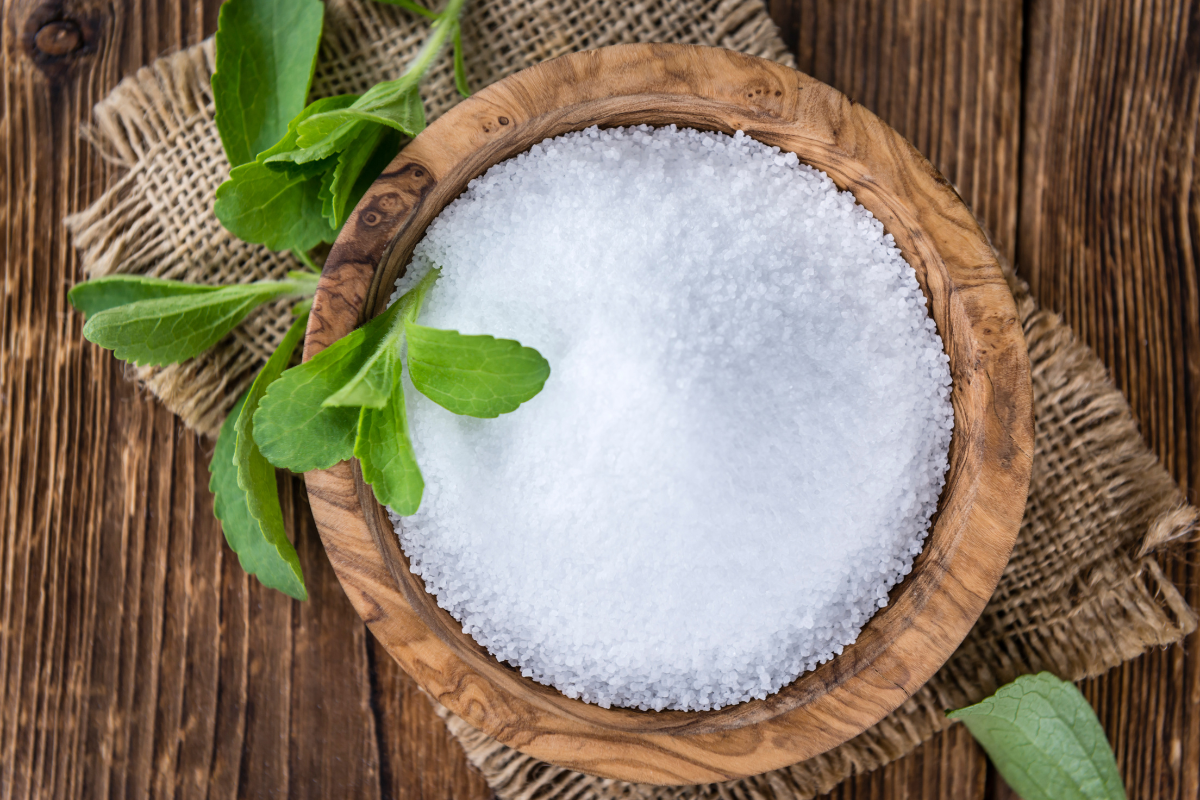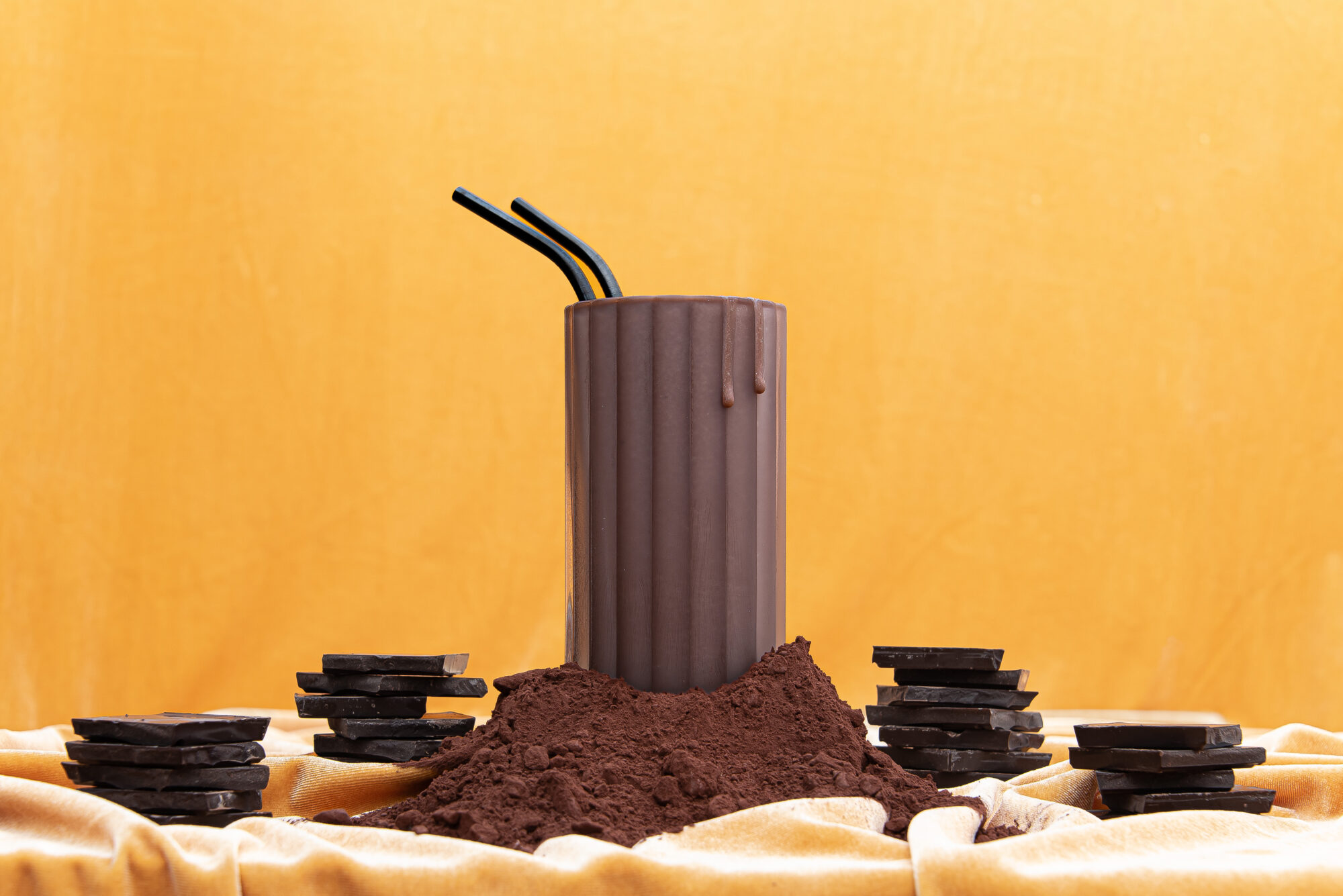
Stevia, Steviol Glycosides, and Ragweed (oh my…)

Stevia is a plant originating from South America and has a potent sweetness if you chew the actual leaves (which look suspiciously like mint). Stevia is in the Ragweed family, along with chrysanthemum, marigold, daisy, and many other plants.
In theory, people who have seasonal allergies (hay fever) and are sensitive to ragweed and related plants may also be sensitive to actual stevia leaves or unrefined extract from stevia.
Here’s where stevia gets interesting: most people don’t like the taste of pure powdered stevia leaf. The leaves are sweet, but there are additional chemical compounds that are rather bitter and not a lot of fun. It’s not the sort of taste that most people would choose.
To combat this, most stevia is purified to take out the bitter parts and give it a “cleaner” taste, closer to regular sugar and in recent years there have been some major changes to “stevia” – it’s not the same today as it was last time you tried it!
Steviol Glycosides

The actual chemical compounds that are created within the stevia leaf that taste sweet are generally called “steviol glycosides” and the ones we are most interested in are called “Rebaudioside” and are lettered A through F, plus M – They usually get referred to as simply “RebA” or “RebM” etc… RebD and RebM are the two specific steviol glycosides that are getting the most attention lately because they are sweeter than the others, taste better, and don’t have the bitter notes.
The difference between the different “Reb” variations can be as simple as how many glucose molecules it has in a chain, but don’t worry: those glucose molecules are locked up tight and have no impact on blood sugar, even if they did, the sweetener is so strong, it is measured in 1/1000 of a gram, the size of a pin head.
If you tried “stevia” sweetened products in the past (which probably used RebA) and didn’t like them at all, but now find that you think they’re alright and maybe even like the taste of stevia, it is likely because the new stevia that you’re tasting is likely a mix of pure RebD and/or RebM. The bitter parts are taken out and the flavor is far cleaner now.
Where do you get RebA, RebD, or RebM?

There are 3 main ways you can source pure steviol glycosides like RebD or RebM:
- Grow actual stevia plants. Harvest the leaves. Dry and grind the leaves. Use a (typically chemical) process to pull out the compounds you want and then further purify them until you have JUST the RebA (which account for about 2-4% of the total dry weight of stevia leaves).
- Take the steviol glycosides from the previous method and run those through an enzyme that converts RebA into RebD or RebM, typically to a 95% purity. This is called “Glucosylated Stevia” (no, there will NOT be a test later =) In the stevia leaves there is typically only 0.1% or less of the RebD, boosting that and purifying it makes for some seriously nice stevia.
- Take the DNA sequence that makes the glycosides you want. Put that into a single-cell organism, typically yeast or a bacteria so that it’s set up to make the glycoside you want and ONLY that specific glycoside (plus maybe ethanol and CO2, in the case of yeast but those are easy to isolate out). Give the organisms something they like to eat or “ferment.” Come back to a vat of happy microorganisms and collect the RebD or RebM. Purify it a bit and dry it. The RebM in PureCane brand sweetener is made this way, then combined with Erythritol.
The second and third methods have some serious advantages, especially the third. The resulting RebD/RebM is absolutely pure with no contamination from other steviol glycosides or stevia proteins that might be problematic for people with a ragweed seasonal allergy (there’s actually a study that concluded the results from method 2 should be considered safe for people with ragweed allergies).
The third method also has the advantage of being able to take just about anything that yeast/bacteria can eat (like plant fibers or plant sugars) and effectively transform it into what is considered a natural and sugar-free sweetener in massive quantities.
What kind of Stevia is used in Keto Chow CORE?
In Keto Chow CORE, we are using a RebD+RebM mixture made from RebA extracted from stevia leaf (Glucosylated Stevia aka: method 2 above). It’s manufactured in South Korea (they’re really at the leading edge of most of what’s happening in the stevia industry). The RebD+RebM mixture yields a flavor profile that is far superior to the old RebA stevia you may be familiar with and is nearly the same purity of taste as sucralose or table sugar according to the manufacturer.
This means 2 things:
- The sweetness/taste in Keto Chow CORE is very “clean” (not bitter or artificial tasting), and if you’ve had a bad experience with stevia-sweetened products in the past, you might be very surprised by how much you enjoy Keto Chow CORE. Several of our employees who are avowed “stevia haters” report that they very much like the taste of the stevia-sweetened CORE.
- If you have a ragweed allergy (or are otherwise sensitive to it), the Glucosylated Stevia RebD+RebM we’re using in Keto Chow CORE is not likely to be a problem for you. With any allergy, especially if it’s severe, be sure you are making safe choices about your health, but we recommend checking out the study on stevia and ragweed for more information. “The Panel concluded that there is no safety concern for the use of glucosylated steviol glycosides as a new food additive at the proposed use and use levels.”
And finally, if you still prefer other sweeteners aside from stevia, we have you covered! Check out the classic Keto Chow line or the unsweetened varieties in our CORE line, where you can add your own sweetener of choice (or not) it’s entirely up to you!





